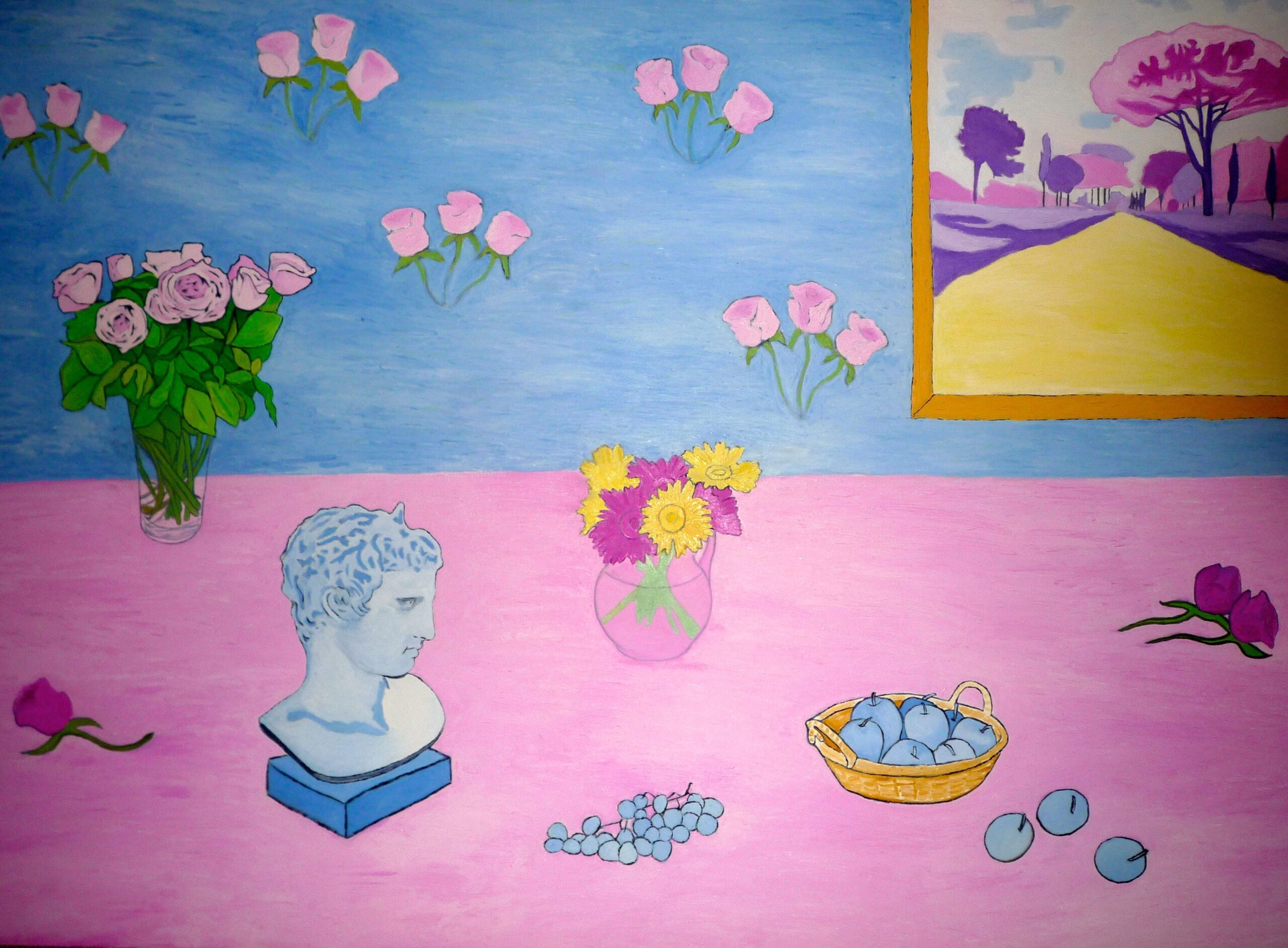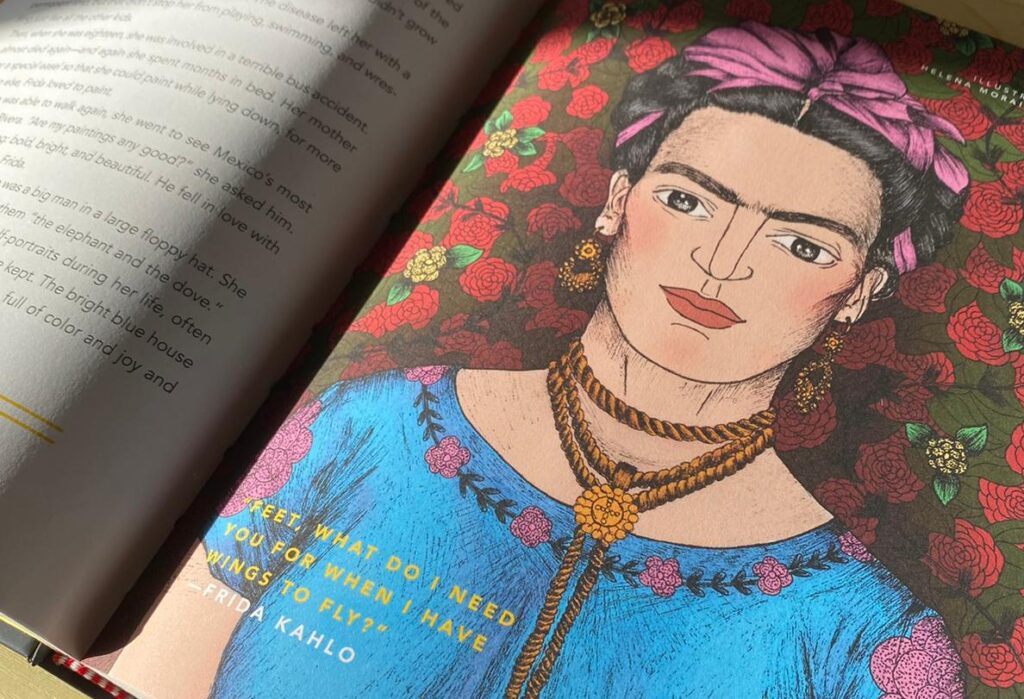
In his 3rd solo show at Highgate Contemporary Art in London, Roberto Pagliarulo will exhibit 20 Italian landscape oil paintings and ink drawings, inspired by the Amalfi Coast. An exceptional colourist, he pictures Italy as a romantic dream-place, populated by classical statues, mythical messengers and pink trees.
I caught up with him to find out more about his connection to Italy, his evocative use of colour and artistic influences.

What does the Amalfi Coast mean to you?
I know Amalfi is the focus for this show but I think Amalfi sits within the greater thing for me which is Italy and the idea of Italy. I was born and raised in England but my father is Italian, so I have a deep interest in expressions of Italy and its culture.
Amalfi is a particularly dramatic expression of Italy: towering views around dramatic bends, cliffs and masses of sea always there in the background, sometimes in the foreground when you are on the beach or on a boat; lemons, tomatoes and trees pushing your eyes into the blue and green of the seascapes; the striking Church of Positano with the dome that has a Middle Eastern influence with the green, yellow, white and black symmetric patterns.
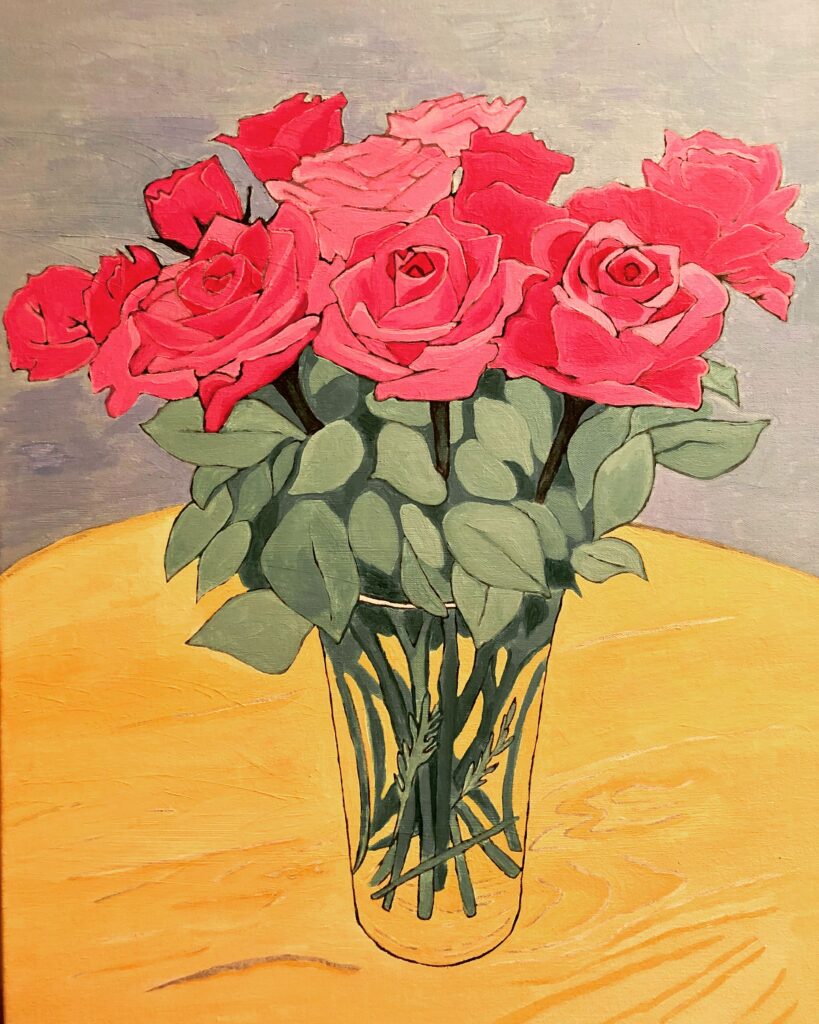
Colour is also important to you, yes?
Yes, absolutely. I’m drawn to colours that are either not real or an extension of what I see. You’ll see lots of magenta, you’ll see pink trees and yellow and purple bushes in the paintings. The bark or foliage of the tree is not really pink, but in a funny way even though it’s staring you in the face you accept the reality of the painting or what the painting is showing you. You don’t really say ‘oh he’s put pink sand there’, unless someone points that out to you; you accept the reality of something that is not real where apples might be blue.
That is perhaps the theme that runs through all this. The colour and the changes of colour from ‘reality’. I want the painting make you contemplate things and, most often, to have a beauty about it. Sometimes I suppose there is a surreal or dream element to it but the arrangement for me is the thing.
This quote from Matisse is most important:
“Colours have their own distinctive beauty that you have to preserve sounds. It is a question of organisation, of finding the arrangement that will keep the beauty and freshness of the colour.”

Is Matisse a definite influence?
Yes. I also had a phase of really admiring Dali. Hockney is always around on my coffee table. And Modigliani. And so many other artists. But out of all of them I have thought the most about Matisse. I love him.
I have also been drawn to singular works of art. Those that have really blown me away and come back to my thoughts include Botticelli’s ‘The Birth of Venus’, the Sistine Chapel and Michelangelo’s ‘David’. They are simply phenomenal.

And are your colourful props real?
Yes, very much so. The props are all things in my house and objects that exist. I often repeat some of them, like the bowl of apples, that become blue apples, the Roman bust I bought in the National Museum shop in London: it is of Hermes the messenger God or Marathon Boy.
The chairs I am particularly fond of – I think they are antique. They actually have blue upholstery on them but I have taken the chairs out of their natural setting and placed them in an almost abstract background.
And what about other objects in the landscape?
I am drawn to where there are sculptures, Roman or Greek, sitting in an Italian landscape. Or I might put those sculptures into another landscape or still life. I have painted sculptures in Villa Cimbrone, which overlooks Positano and Amalfi. They are also surrounded by Italian trees and flowers, with the sea in the background. I particularly try to find a frame in my sight where there are these sculptures.
For example, the fawn-like creature which is blowing a tune with the Amalfi Coast in the background is almost heralding the view and the viewer. This character was an object that came from an antiques shop in Positano that is placed outside the shop on the top of a hill overlooking the sea. I imagine the owner does it every morning to welcome the world. In another painting, the sculpture is reaching for something, its hand pointing us up to something beyond.
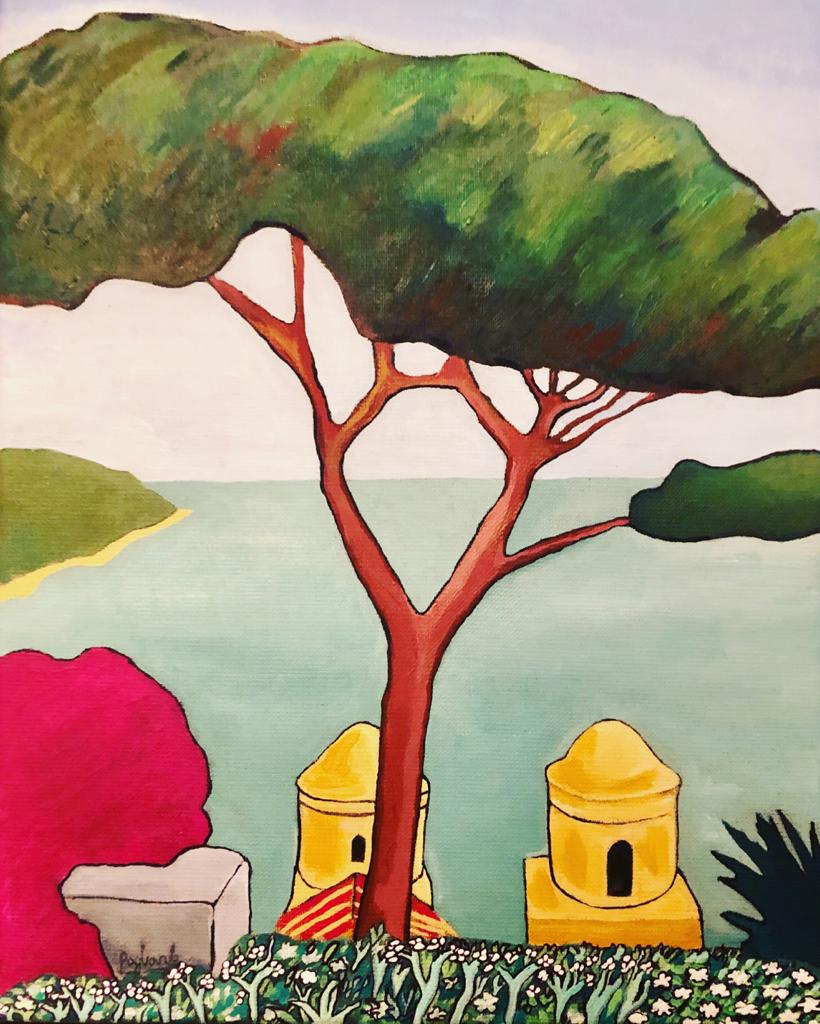
There is also a cinematic quality to the paintings…
That’s interesting you say that. I love films! I watch films quite a lot. My most recent one I watched again was Kill Bill! It’s violent but there is great colour in it.
My mother was an actress. My father always loved films, too, I remember. I also like photography. I remember studying Muybridge and other animals which researching my M.Phil thesis on Gertrude Stein. I was interested in her attempts to slow down time in her opera.
More importantly, I often consciously frame a view that becomes a painting. I’ll place the sculpture at a particular place in the picture. I also use photos to assist with several of the pieces.
What is important is as a child I learnt about “repoussoir” …. Claude Lorrain was a big early influence mainly in this aspect. I have used repoussoir ever since you’ll see it a lot, playing with a tree or sculpture into the foreground drawing you into the beautiful background whilst also not losing the importance of any important piece at the front.
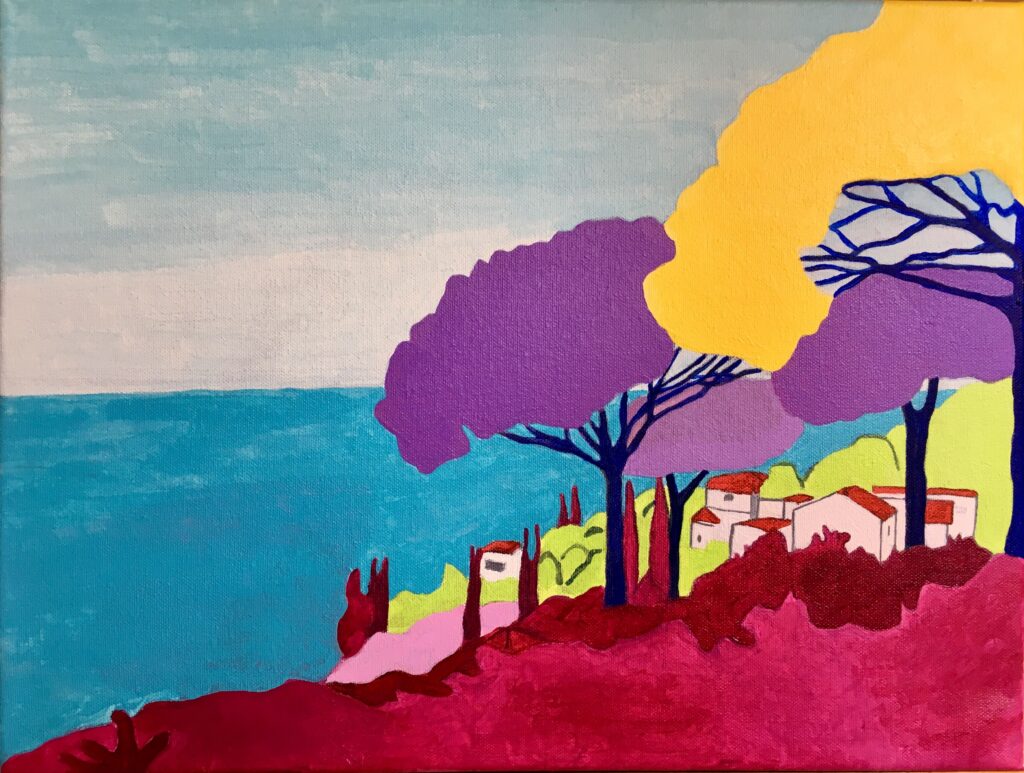
Your paintings can be peaceful and also dramatic…
I suppose that is a natural reflection of the world around us and also creating something else. I’ve always been interested in plays and theatre, so the dramatic is important. Shakespeare used plays within plays and in some of my paintings you’ll see I place a painting within a painting. It’s a playful and contemplative thing. It also ties into what we were discussing earlier about finding arrangements of colour.
I am also drawn to the old Greek mythologies. You’ll see a dramatic painting of a wonderful sculpture of Hercules and Lichas by Antonio Canova. Lichas was Hercules servant who adored him. He was tricked into giving Hercules and poisoned shirt, which killed him. The sculpture memorialises the moment that Hercules in agony, throws his servant into the sea.
The other element is the process of painting is both peaceful and also can be dramatic. When you paint, you are often at peace and nothing matters other than what you are doing at the moment. Hours can fly by.
You get other moments where you are really conscious, particularly if the painting is at earlier stages, and it has not come together yet. You know how to do it, you have done it so many times before, you just have to keep pushing …… then something awesome happens where it comes together.
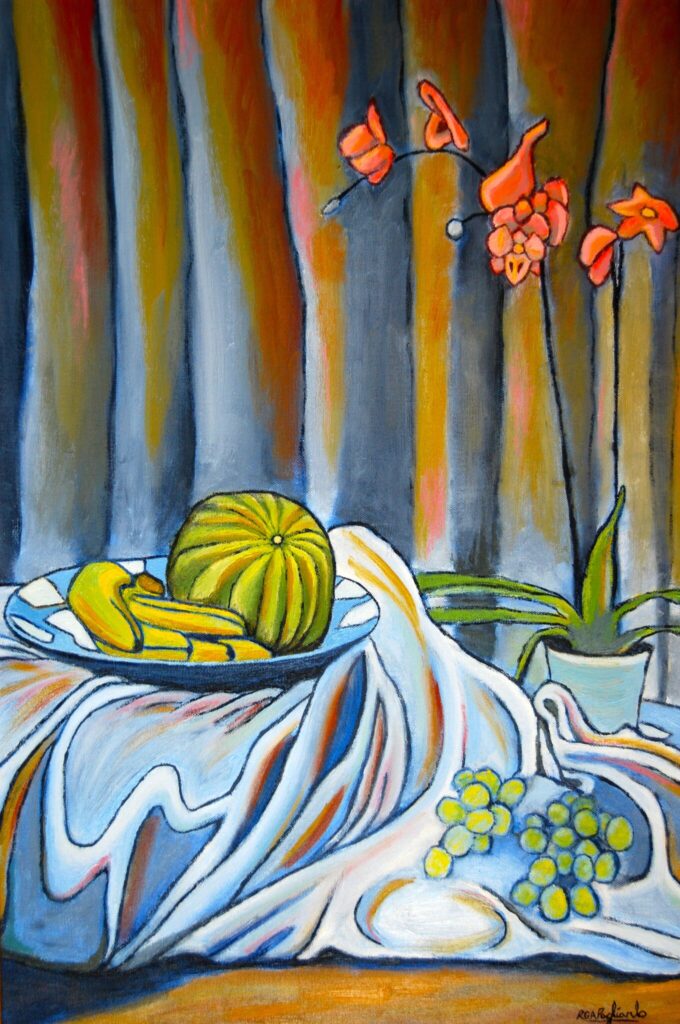
Roberto Pagliarulo: An Amalfi Dream runs from 4th – 26th September, 2020 at Highgate Contemporary Art. Prices for Roberto Pagliarulo’s Italian landscape oil paintings start at £1,000.

